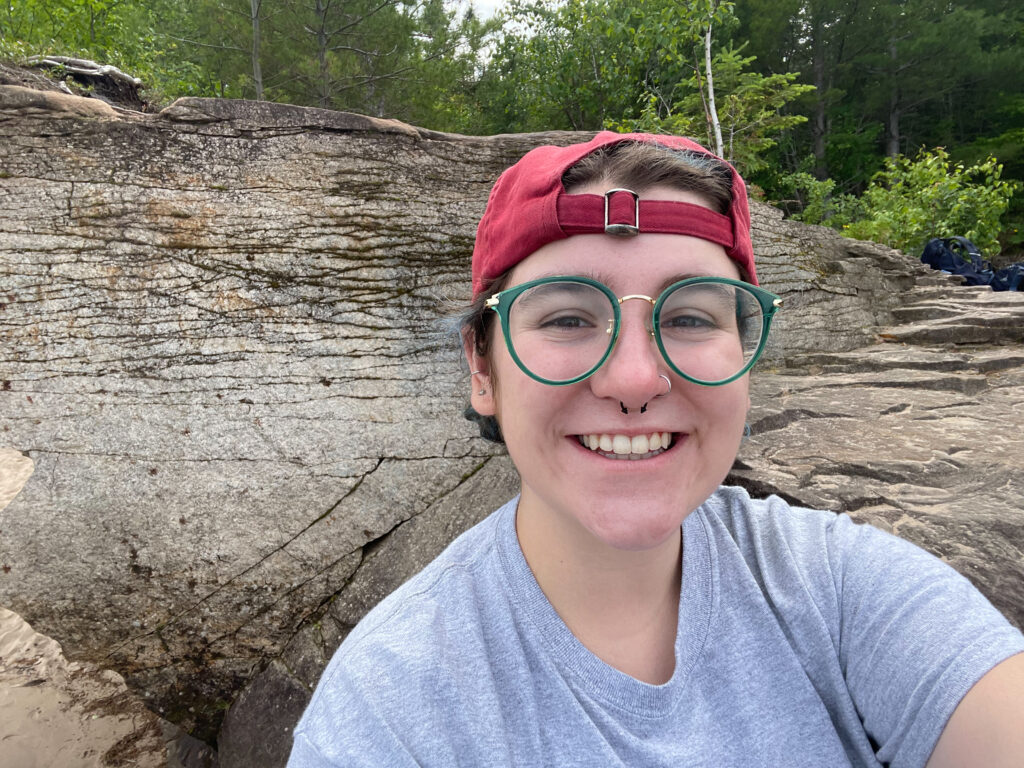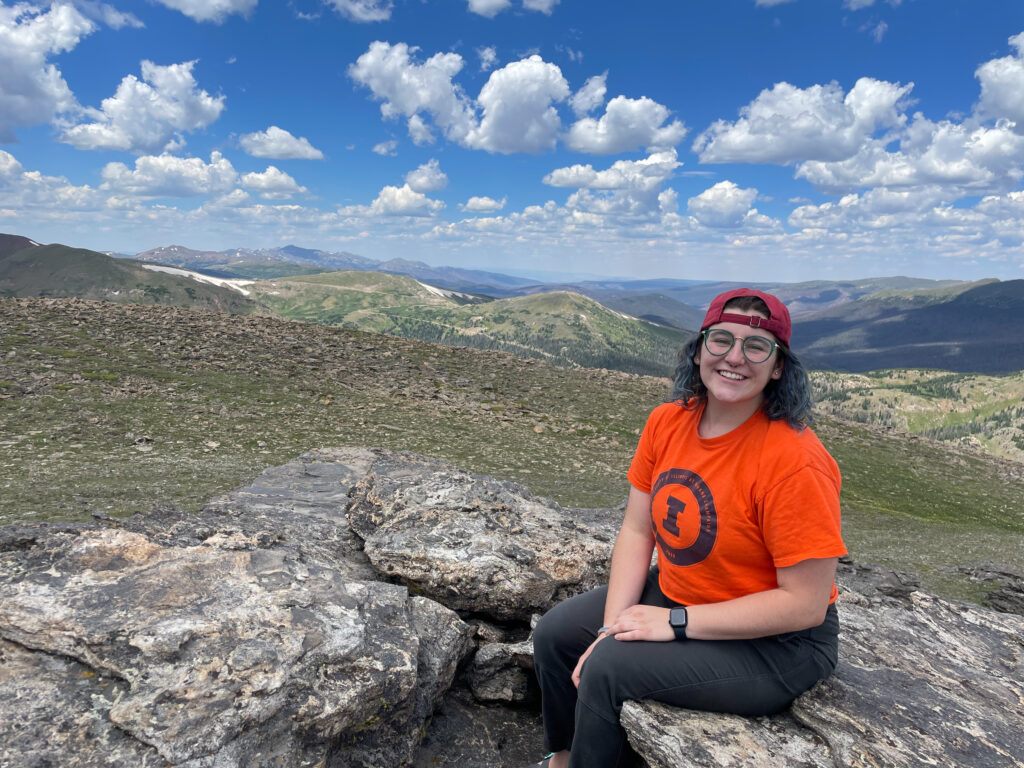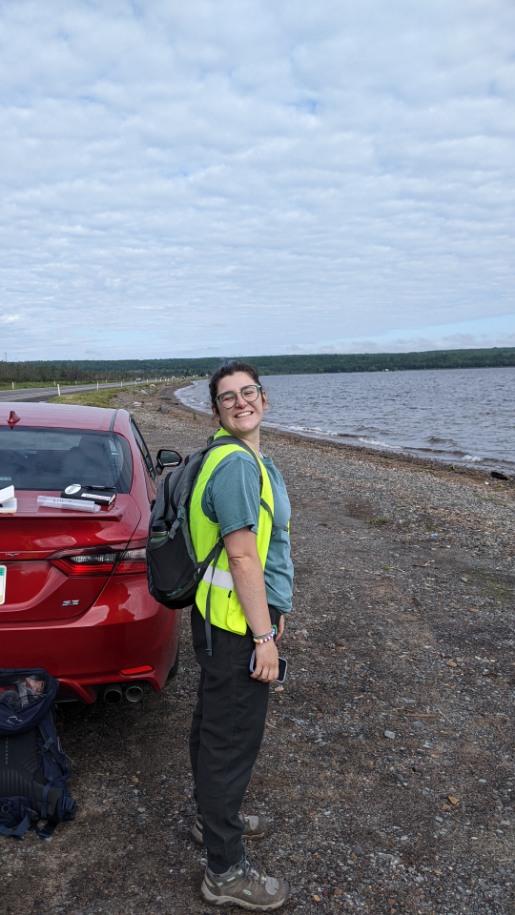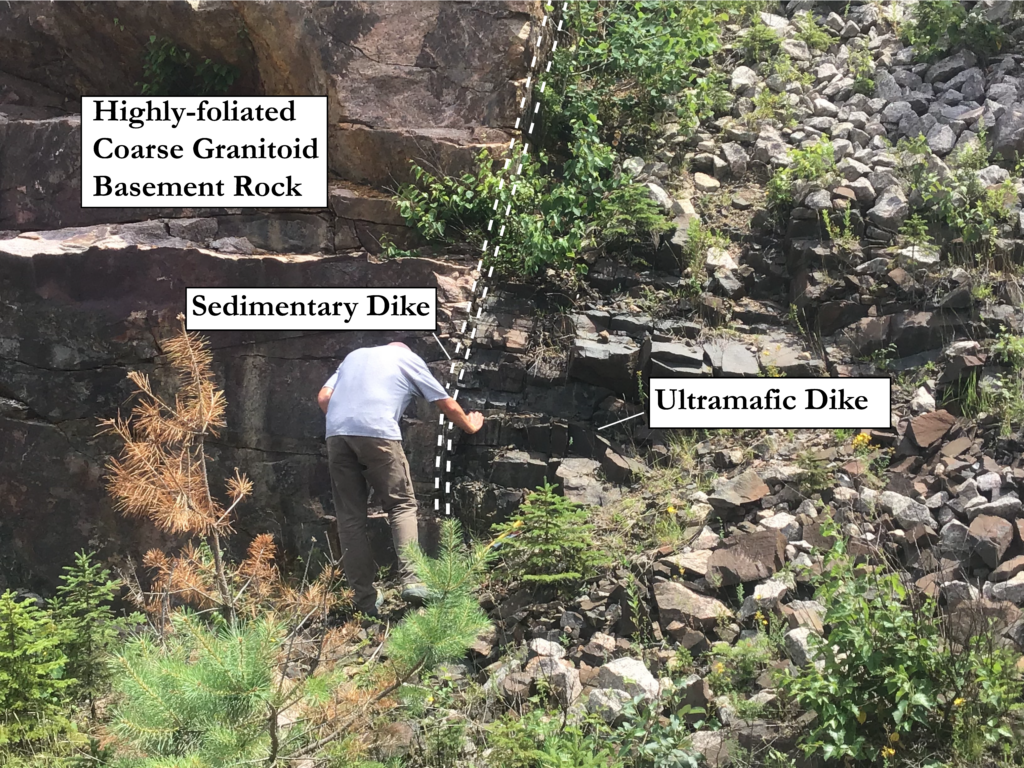



This summer we’re introducing interns in the RESESS, Geo-Launchpad, and USIP programs to shine a spotlight on the research projects they are completing throughout these 11-week internships and on their interests in geoscience.
Addison Curtis is a rising senior at the University of Illinois Urbana-Champaign, where they are majoring in chemistry with minors in geology and secondary education. Addison enjoyed the challenge of, and problem-solving required in, their high-school chemistry class, so they initially entered college as a bioengineering major. Addison quickly recognized that they enjoyed chemistry more than engineering and switched their major. Addison’s mom is a middle-school history and social studies teacher and their dad previously taught courses in the military, so Addison was exposed to careers in education early on and intends to obtain their high school science teaching license upon graduation. Because the certification allows teachers to teach all science courses, secondary education students are required to sample a variety of introductory level science courses. Thus Addison took an introductory geology course and found a passion for Earth science. They have been busy securing their required field hours for their teaching license, so RESESS is Addison’s first research experience. Addison is excited to further explore the geology research process and create a network within the field as they prepare to apply to graduate school.
This summer, Dr. Rebecca Flowers and, more directly, PhD candidate Barra Peak are mentoring Addison through the Thermochronology Research and Instrumentation (TRaIL) Laboratory at the University of Colorado Boulder. Addison is investigating a sedimentary dike in southern Ontario, Canada. A dike is a slab of rock that cuts through another rock at a different angle, forming either by being infilled or injected from the top through a crack or existing weaknesses in the rock—as is the case here—or due to a magmatic intrusion from below. In their initial research project, Addison was supposed to grind up a sample of this dike and pick out the zircon crystals inside it. These zircons were then going to be used for uranium-lead dating to estimate the oldest possible age of the dike. Since the dike is sedimentary, the zircons would have accumulated in the dike after forming elsewhere, so the youngest zircon would be the oldest possible age for the dike’s formation.
Unfortunately, Addison was unable to find any zircons within the sample after 25 hours of searching. Because of this, Addison had to pivot the focus of their project with the guidance of Dr. Flowers and Barra. The team had initially thought that the dike was a sedimentary clastic rock; however, after creating thin-sections of the sample, they realized it was actually a carbonate with clasts. Addison is using thin-sections and electron microprobe analyses to identify the minerals within the rock, as well as the internal structure of the thin section, to determine the mechanism of how the dike formed. That information will help constrain the paleoenvironment conditions and erosional history in southern Ontario.
In addition to the variety of research techniques that Addison has sampled this summer due to their evolving project, Addison has also gotten some fieldwork experience. For her thesis, Barra is using geochronology and thermochronology to study the Great Unconformity. Addison had the opportunity to go into the field with Barra in the Upper Peninsula of Michigan to collect sandstones for Barra’s research.
Q&A:
- What has been your favorite part of the RESESS program so far?
I really, really like all of the other interns. It has been super fun to meet a bunch of different people from different places because we are from all over the country. Very diverse backgrounds in terms of majors and where we’re from and everything like that. Getting to know them and create that kind of network has been really fun. I’ve also really loved being in the lab I’m in. I’m in the CU TRaIL Lab with Rebecca Flowers, which does geochronology and thermochronology work. I had no idea what that was before I came here, but I had researched her a little bit before because I’ve been looking at grad schools and stuff and I really love the lab. Everyone’s really nice, everyone’s super collaborative. I’m the summer intern, so I’m kind of the new kid, but everyone has been super accommodating and been like, “Let me help you with this,” or “I have this skill, let’s collaborate. Let’s do all of that.” Between both of those, interacting with people and collaborating, that’s probably been my favorite part.
- What have you gained from your mentorship with Dr. Flowers and Barra Peak?
[Dr. Flowers] is super busy. The summer is a great time to do fieldwork and to travel, so I haven’t talked to her a ton, but she’s been really helpful when trying to guide us, especially when the project went a little wonky. In terms of my grad mentor, Barra, I’ve learned a lot in terms of how grad school works, how this is all laid out, what the day to day looks like, what the broader PhD looks like as a whole. We’ve also spent a lot of time together in the field. It was a lot of driving, so to just pick her brain on what got her into this and why she chose CU Boulder, because it’s somewhere I’m looking at for grad school. I mean, also obviously all of the technical stuff. I’m not familiar with the highly-technical, very specific method on dating rocks, so [it] has been cool to get that hands-on lab experience and develop those technical skills. I’ve also learned a lot of that and lab techniques, which was pretty cool.
- Have you learned about any new topics/research techniques that have really piqued your interest?
For me personally, [geochronology] is a really great combination of geology and chemistry, because my entire background is in chemistry. That’s what I understand. That’s what I have a lot of experience in. In geochronology, it’s a lot about looking at specific elements, like looking at uranium…[to use it for] geochronology, dating things, or thermochronology…looking at the different thermal history of rocks through different minerals and how that relates to tectonic events and structural events. I really like tectonics and structures. That makes sense to me and I think it’s really cool. Like, how did this mountain get here? Let us look at a rock and analyze its thermal history with all these special techniques. I like that kind of research. I was kind of looking at this kind of research before I got here and I just happened to have a project that fell into that. I definitely want to continue doing geochronology and thermochronology work… We didn’t get to the analysis at all. I didn’t actually get my hands on any of those instruments, so I actually want to do that. I want to follow through on that. I think this area, different applications of it, or similar avenues is where I want to be.
After graduating in the spring, Addison plans to obtain a master’s degree in structural thermochronology. Although they will be graduating with their teaching license, Addison is still unsure if they want to teach in a public high school. Regardless, Addison hopes to continue exploring geology through graduate school and to someday teach Earth science, whether that be in a public high school, a community college, a four-year university, or through informal outreach. This summer, Addison is excited to roadtrip to Missouri for their cousin’s wedding and to spend time with their family.
Written by:
- Lucia Bellino, USIP Intern
- Posted: 12 August 2022
- Last updated: 4 August 2022
- Tags: internships, mineralogy, RESESS, thermochronology


